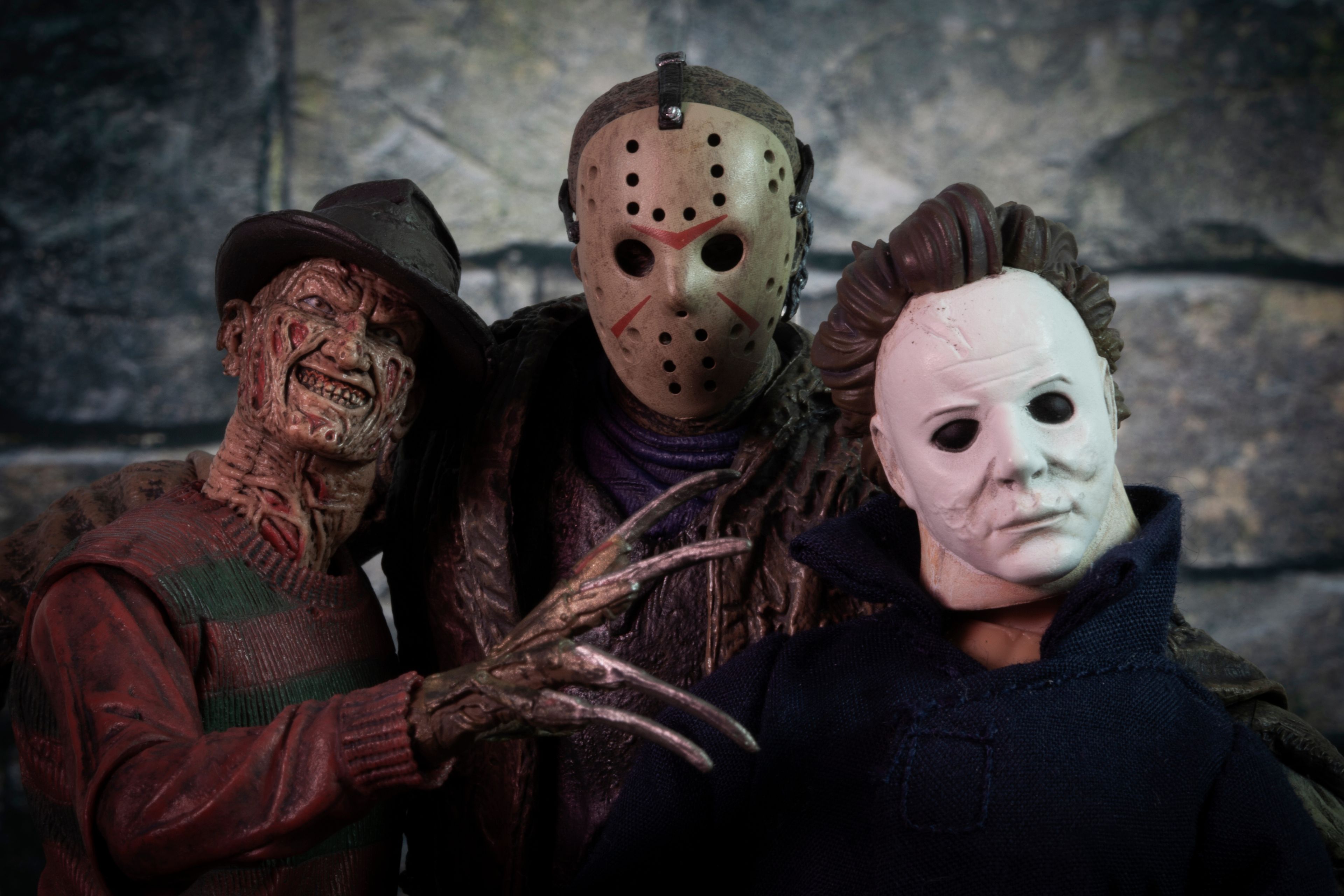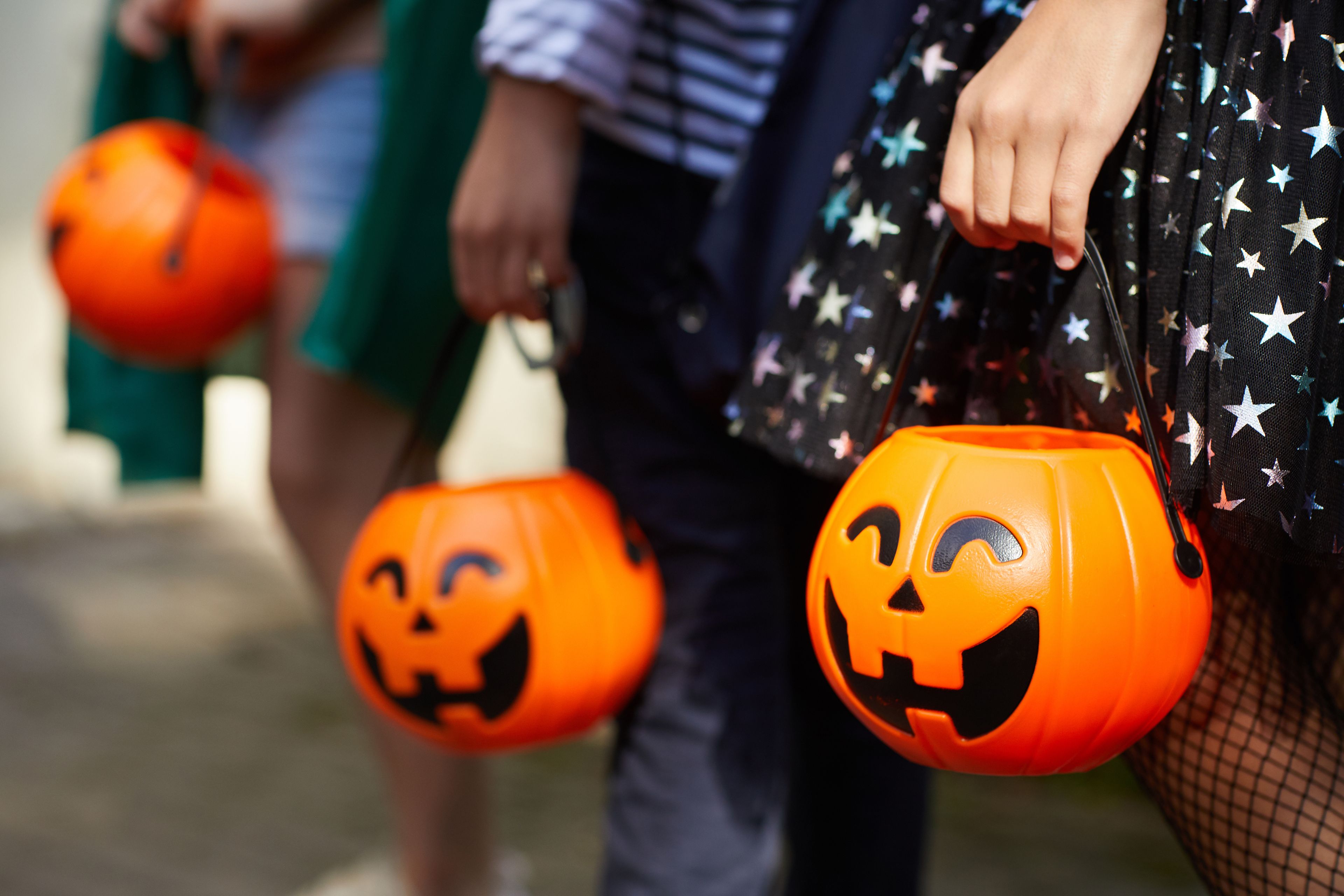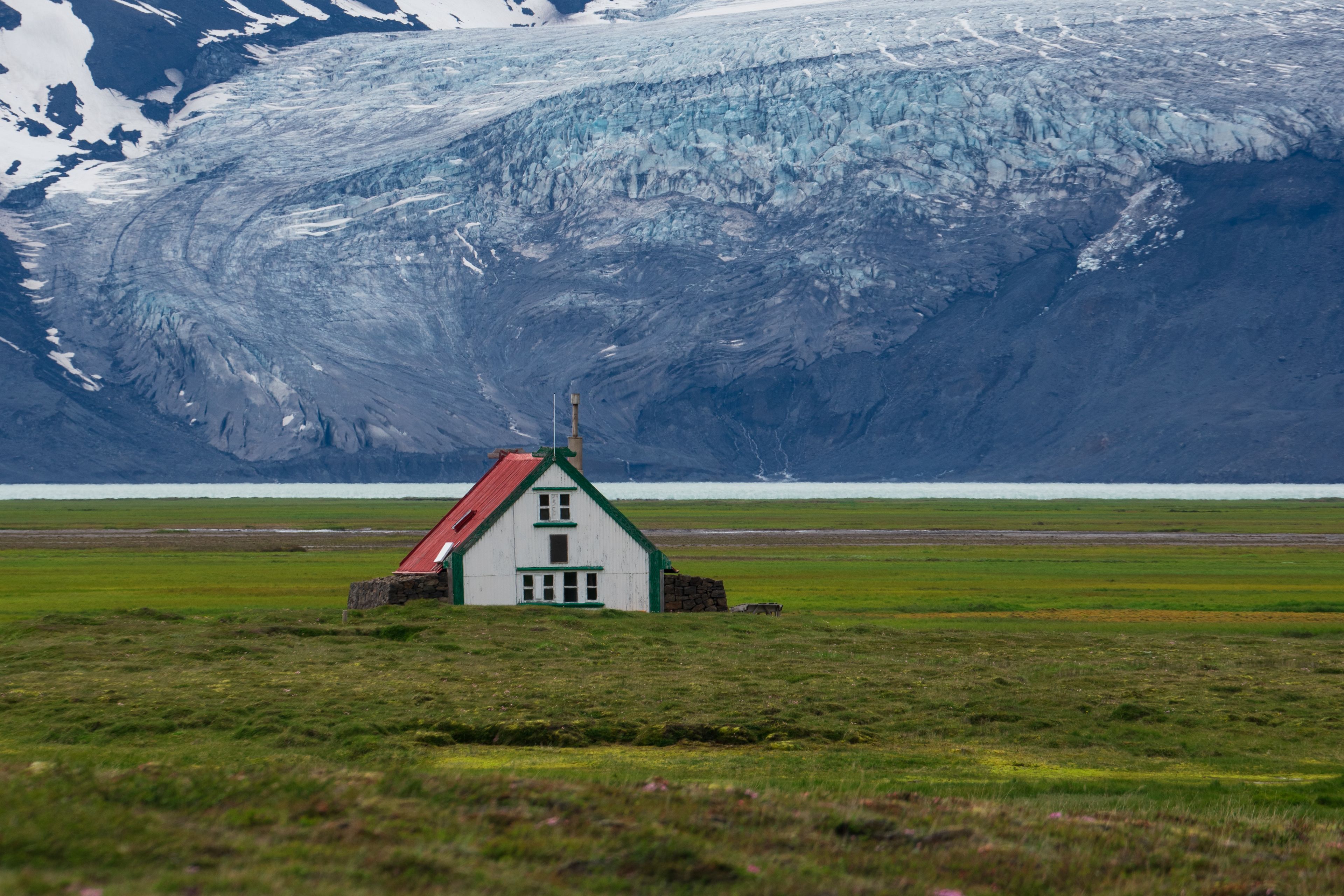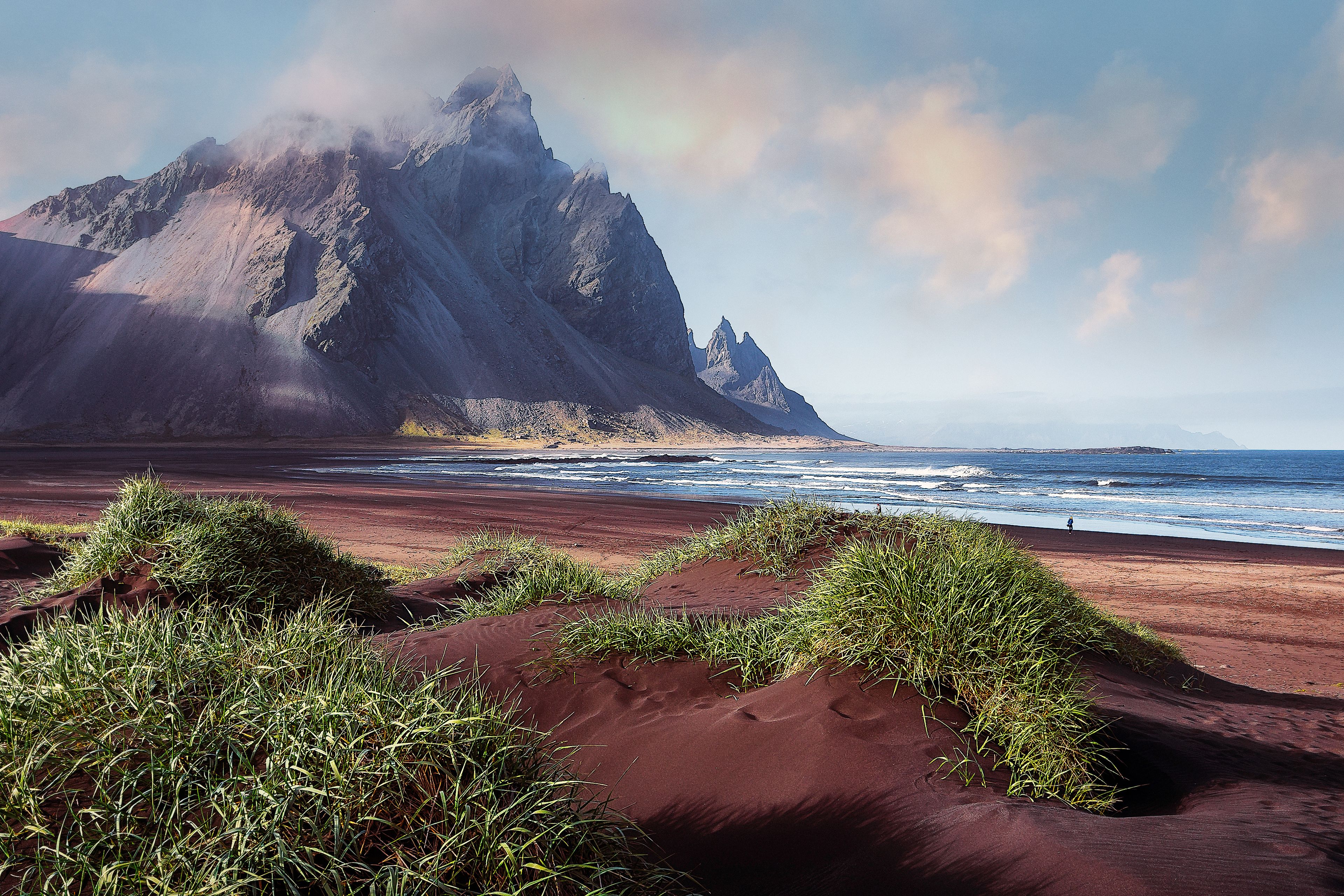
Trick or Treat: Halloween Fun in the Land of Fire and Ice
Jump to chapter
It’s that time of year again! The streets are filled with spooky ghouls and terrifying goblins. The foggy fall night cascades over the bright orange jack-o-lanterns. And suddenly you realize you may have spent too much money on your Halloween Costume. If you are American or European this is most likely your normal. However, not all countries celebrate Halloween and if they do, they might do it a little bit differently than you. So let’s discuss if Iceland is on that list and how you can get spooky with Icelanders on October 31st this year.
How did Halloween become a holiday?
Before diving in, let’s discuss how Halloween even became a holiday. Halloween’s roots took place in the ancient Celtic festival of Samhain. Which is a pagan religious celebration that also celebrates the harvest season. The festival is celebrated in the ancient Celtic communities of Europe, including Ireland, Scotland, and Wales. People would sit around bonfires and wear costumes to help ward off ghosts.
Then in the 18th century, Pope Gregory III claimed November 1 as a time to honor saints This is when “All Saints Day” started to become known as All Hallows Eve. The day was later transformed into Halloween. So how did all of those fun Halloween traditions get started from this point on?
Wearing Scary Costumes
During the Celtic Festival of Samhain, costume-wearing began. The locals came up with a plan, if they were dressed up as someone else then the spirits wouldn't know who they were. They thought that the scarier their costumes were, the easier it would be to keep them at bay. This is a part of the tradition of pretending to be someone else for Halloween and still lives on till that day.

The History Of Pumpkin Carving
If you do celebrate Halloween chances are at one point you picked out your own pumpkin. Just to take it home and carve it into a character of your choice before putting a flickering candle inside of it. This tradition started in Ireland, but instead of carving pumpkins, they used turnips instead. But why? Apparently, it was due to the legend about a man named Stingy Jack. He was known to have repeatedly trapped the Devil, he said he would release him on one condition, that Jack would never go to Hell. When Jack did die, it is said that Heaven did not want his soul either. So he had nowhere to go, leaving his soul forced to wander around the planet for eternity. The Devil was nice enough to give Jack a burning lump of coal in a carved-out turnip to light his way. The locals of Ireland began carving scary faces into their own turnips to help scare the spirits away.
Controversial Trick or Treating
The history of Trick-or-Treating has a few different theories. The first one said that the Celtic People were known to leave food out to help keep the spirits happy. The second theory states it is a Scottish Practice, known as the secular version of “souling”. In middle age, poor children and adults would collect both money and food from local homes in return for prayers for the dead. These were known as jokes and “tricks”.
The third one comes from American trick-or-treating known as “belsnickeling”. This tradition is known to be German-American which happened during Christmas. Children would dress up in a costume and go to their neighbor's homes so adults could guess who they were. If no one could guess who they were, they would be awarded candy.

Do Icelanders celebrate Halloween?
So now that we know how Halloween became a holiday over time, do Icelands partake in it? Yes and no. They are quite clear that it is an Americanized holiday and they are right. While it may not be a holiday that lands itself on everyone's calendar, it is still celebrated by some! Icelandic Children do partake in dressing up on October 31st. If you make your way into the markets in mid to late October you will even see some spooky decorations and pumpkins. Adults tend to throw parties and dress up as well on October 31st. It has not always been this way and has really gained more interest from locals over the past five years. Because let’s face it, it can be such a fun holiday to partake in.
Is Öskudagur The Same As Halloween in Iceland?
No, it is not and we don’t recommend calling it “Iceland’s Halloween” as the locals don’t appreciate it. They are very two different holidays even though on the surface it may appear they have some similarities. Öskudagur which is also known as Ash Day is the first day of lent which takes place on February 22nd.
On this day children are given the day off from school and are encouraged to dress up in a fancy dress and sing in exchange for sweets. It is a classy and less spooky version of trick or treating.
Originally The Icelandic tradition surrounding this day involved young women that would try to pin little bags filled with ashes onto the back of the boy they had a crush on. This was supposed to be done without the young man noticing. In contrast, young men would try and do the same, but with pouches filled with pebbles. So as you can see, two very different traditions!
Djákninn á Myrká
Iceland does have some creepy and haunting folklore tales. The most famous folktale in Iceland is a spooky one, The Deacon of Dark River. The story goes that there was a deacon who lived on a farm called Myrká. He was interested in Guðrún, a girl who lived on the farm Bægisá located across from the river Hörgá. Right before Christmas, the deacon rode on his horse Faxi to Bægisá to invite Guðrún to a Christmas feast at Myrká. He promised to come back on Christmas Eve so he could bring her to the feast. When he was riding home, a bridge over the river collapsed, which caused him to fall. As a result, he had an awful head injury which caused him to pass away. His body was found the next day and he was buried a week before Christmas.
Back home, Guðrún was getting ready for the feast on Christmas Eve. There was no word of the deacon’s death yet. She heard knocking on the door but no one was there. She thought it was a game he was playing and ran outside with one sleeve of her coat on. She saw the horse Faxi and a man sitting on the horse, assuming it was the deacon. They ride off into the night together. Eventually, the deacon’s hat tilts up and underneath his face is a skeleton. The Deacon speaks: “The moon fades, death rides. Don’t you see a white spot on the back of my head, Garún, Garún?“ She replied, “I see, as is“.
They did not speak a word to each other until they came to the deacon’s farm Myrká. When they got off the horse, the deacon spoke again. “Wait here Garún, Garún. While I move Faxi, Faxi over the fence, fence”. When Guðrún noticed an open grave in the graveyard, she was terrified that the deacon was trying to pull her into it. She was able to break free thanks to her having one sleeve on. She ran away and pulled the church bells to alert the people of Myrká. The deacon then plunged back into his open grave with part of her sleeve that he ripped off. After this moment it is said that the deacon haunted Guðrún. The haunting did not stop until an exorcist was summoned to put his ghost to rest. This folklore story has been an inspiration to artists, musicians, and more. Also in Icelandic folklore, ghosts often speak in verse, repeating the last word of each line. Making it a very poetic and spooky story.
Spooky Things To Do In Iceland
If you find yourself visiting Iceland on Halloween, there are still some spooky things you can do to celebrate this October!
The Hvítárnes Hut
Visit the most haunted and oldest hut in Iceland, the Hvítárvatn hut. The hut is located in the highlands of Iceland in a very remote area about eighteen miles from anything. The hut has no electricity, WiFi, or telephone. It is downright impossible to get a signal on your cell phone here too. Some even say it is one of the most remote areas in all of Europe.
Besides the location, what makes the hut so terrifying? The story that comes along with it. The hut was built on a site of an abandoned village where there is a legend of a brutal murder. The victim, a female ghost, has haunted people who visit the hut for over eight years. The story of the murder is that a resident of an old farm ruin close to the hut had fallen in love with a local boy and gotten pregnant. The boy did not feel anything for her and as soon as he heard of the pregnancy, he drowned her in the Hvítá River. Since then her ghost lives on, terrifying anyone who attempts to spend a night here.

So let’s talk about the brave souls that have stayed in the hut. In 1929 a few mountain men were getting ready to sleep for the night when one of them asked not to be awakened. They had to wake him up as he was having nightmares in his sleep. He said he saw a woman that he believed had only one arm and wanted to see more of her. It is unclear if he did see her again or not.
Then in the mid-20th century, a group of herdsmen stayed in the hut with their dogs. The dogs started to act stressed out and began barking. They then heard chaos outside such as horses galloping around the hut. They went to see what was causing it and as soon as they went outside it was silent.
Then shortly after a group went to stay in the hut. One man did not believe in ghosts and made fun of those who did. He went to sleep and was thrown down the stairs to the upper loft, causing minor injuries. These are just some of the tales, others report seeing and hearing things.
Today you can book a night in the hut if you dare. It is quite impressive regardless, with two large floors. There is a ground floor that has an entrance, a tiny kitchen, and two rooms with bunk beds. The upstairs loft has a small room with a mattress on the floor. There is a toilet that is located in a separate house which is a walk. Be sure to bring all of your spookiest friends with you as the hut does fit up to 30 people.
An Elf Rock
Take a quick visit to Elf Rock in Reykjavik. The rock was set to be removed when the city began to expand in 1942. No matter what they tried to do, the rock would not budge. There are even marks on it from all of the equipment they used to try and move it. There are two different occurrences of an elf trying to stop the rock from being removed. One of the workers, Þorbjörn, had a dream that an elf came to him the night before they were going to blow it up. The elf was pleading for help and to be left alone, he also threatened that “bad things would happen”.
Then later on a man named Tönsberg was trying to build his house where the rock was. Þorbjörn told him it was an elf rock and to leave it be or “bad things would happen”. Tönsber was Norwegian and not Icelandic, so he did not believe in the elf. He did however build his house elsewhere to respect the traditions. Later on, he wanted to change the whole plot of land into a field for farming. His plan was to drill two holes into the rock and blow it up in two days. At this time, he sold fresh eggs from his hens to local bakeries and businesses. As soon as he said he was going to blow up the rock, his hens stopped laying eggs. A very strange occurrence. He brought them in to get looked at and the veterinarian said everything looked fine. At this point Tönsber was freaked out, to say the least. He decided not to blow up the rock and the hens continued to lay eggs again.
All attempts to move the rock were eventually shot down. Which is why the rock still sits there today! Take a quick stroll on the backstreets of Reykjavik and visit the elf that calls this rock home.
The story of an Elf Rock, also known as the Elf Stone was published by the first journalist in Iceland, Árni Óla. He wrote the story in 1957 before it was published in 1968. You can even find it in his book Horft á Reykjavík in1963.
Address: 43J9+GR8, 102 Reykjavík, Iceland
Hólavallagarður
After visiting the rock, you can stop by an eerie part of the city, Hólavallagarður. Which is the oldest cemetery in Reykjavik. The cemetery is also referred to as “The Old Churchyard”. The cemetery opened in 1836 as a new cemetery in the city. Prior to this, the area was a burial ground for Vikings. Today some of the most famous Icelanders of all time are buried here. This includes Jón Sigurðsson, the father of Icelandic independence, Jóhannes Sveinsson Kjarval, Iceland’s most famous painter, and Ingibjorg Bjarnason, the first woman member of parliament.

You can walk around the cemetery today and there are even little information postcards for you to learn all about the history. The cemetery is surrounded by trees including willows, spruce, birch, and more. We recommend taking a stroll at night when the moonlight is shining over the graves, accompanied by the dark black sky.
Get A Costume At Hokus Pokus
Did you forget your Halloween Costume at home and want to get a little festive on Halloween? Then Hokus Pokus in Reykjavik can help you. Because what is Halloween without a proper costume anyway. This charming and locally owned shop has plenty of options for you to explore. This includes masks, wings, and accessories. You can even decorate where you are staying with bloody decor and creepy skeletons. Some fun costumes they have are vampires and spooky ghouls. A fun place to get all of your Halloween needs, right in the heart of Reykjavik.
Address: Laugavegur 69, 101 Reykjavík, Iceland
Austurvöllur Graves
Stop by the ancient burial ground of Austurvöllur Graves, which sits in the square area in front of the Parliament. This burial ground was accidentally discovered during the early work of the foundation building of a new hotel. It is said that when construction started staff saw the graves that were filled with skeletons and bodies. Some that could have even been some of their ancestors.
Now the burial ground is covered up, for obvious reasons. Instead, you can get your spooky vibes on at the Skúli Craft Bar on Aðalstræti instead, which sits on the edges of the burial ground. Enjoy one of their craft beers, while talking to locals about the scary stories of the area.
Address: Aðalstræti 9, 101, 101 Reykjavík, Iceland
Halloween Reykjavik
Party the night away at Reykaviks biggest Halloween Party! Every year on October 31st, Halloween Reyjavik throws the best bash in the country. While Icelanders don’t celebrate this holiday as much as other European and American cities do, they still throw an entertaining party for it.
The party is held at Gaukurinn, located at Tryggvagata 22 on the upper floor. This is a “no costume, no entry” rule, so dress to impress. There is also a “battle of the best costume” so be sure to get creative with your Halloween attire. It kicks off at 8:00 PM with the award ceremony taking place around midnight. There is a small entrance fee of 2000 kr, about 14 USD. Dance the night away and celebrate with some spooky Icelanders!
Address: Gaukurinn, located at Tryggvagata 22 on the upper floor.
Stokksness Beach
Have a spooky beach night at Stokksnes Beach! While there are no specific ghost stories here, it is a tragic place. Shipwrecks and deaths were common due to the sea's rough waters. It is known to be a place in Iceland that has the most shipwrecks.

Locals and sailors believe the area is haunted. Documentary makers and photographers have seen footprints going to the water and large men with long hair coming out of the water. Some even call Stokksness Beach the “Sea Of Ghosts. Even though it is spooky it is quite a beautiful and popular spot to visit. During late October you could spot the Northern Lights if you are lucky! So bundle up, get comfortable and enjoy the eerie area.
The Hurra
Enjoy a drink while listening to the scary ghost stories from your bartender. The Hurra is a pub and live music venue located in Reykjavik that serves up some delicious drinks. However, it is rumored to be a haunted pub. Some staff members have reported strange shadows, noises, and a weird feeling that they are being followed. But why here? Legend has it that a young man was killed in the location and since then, his spirit has been sad and lonely. I guess that is why he chose the pub to stay around at. We recommended adding a cold drink to your Halloween itinerary at this spooky bar.
Address: Tryggvagata 22 101, 101 Reykjavík, Iceland
Höfði House
Located near Reykjavik is the Höfði House. It is not far from downtown and the house looks over Faxaflói Bay and Mount Esja. This house has a long line of ghost stories and hauntings, perfect for a Halloween visit. First, it was bought by Einar Benediktsson, a poet and judge who claimed it was haunted by the ghost of a young woman. Then later it was said that Sólborg Jónsdottir was the ghost of the young woman; she poisoned herself after Einar’s verdict on an infamous assault case. He claimed that she would only visit him at night. Staff members and visitors claim to have heard weird sounds and seen bizarre things at the house, especially at night.
Höfði House is historic as well. In 1986 the presidents of Russia and the US, Mikhail Gorbachev and Ronald Reagan met here to end the Cold War. Regardless of chasing ghosts or just wanting to marvel at a historical building, it is worth the visit. You cannot go inside since Hofdi House is the site for official city social functions. But, you can walk around the grounds of the area. There is a breathtaking sculpture in front of the building which illustrates the high seat pillars that belonged to the Viking chieftain, who became the first settler of Reykjavik.
Address: Borgartún 105, 105 Reykjavík, Iceland
The Haunted Walk of Reykjavik
Scared to visit some of these places by yourself? Don’t worry you can take part in The Haunted Walk of Reykjavik. This 90-minute tour will bring you through the streets of the city with stops at haunted locations. You will visit An Elf Stone, The Oldest Cemetery in Reykjavik, and Parliament Park during the tour. All of their stories are researched by a local historian. The tours are offered in the evening too, providing a spooky atmosphere for enjoying the Iceland ghost stories. The ghost of the tour is ISK 3.000, which is about $20.
Latest Blog Posts
 South Coast
South CoastKirkjubæjarklaustur, a volcanic village in South Iceland
In South Iceland, where the land displays a wide variety of different natural monuments, where volcanic plains meet astonishing waterfalls, there are also a few towns that are quiet but charming stops for travelers. One of them is Kirkjubæjarklaustur, a small village surrounded by lava rocks covered in moss and rugged cliffs. This place, which goes way back in history, is a great option to use as a base to explore all the great things this region of Iceland has waiting for you.
 Places to Visit
Places to VisitGatklettur: Iceland's Stunning Stone Arch
Iceland is packed with cool sights, but some of the best ones are hiding away from the busy tourist spots. Gatklettur is a natural stone arch sitting on the Snæfellsnes Peninsula – a hidden gem most travelers miss. Here’s everything you need to know before you go.
 Highlands
HighlandsGjáin Valley in Iceland: A Hidden Treasure in the Highlands
Iceland has tons of amazing landscapes, but Gjáin Valley truly stands out. This green paradise tucked in the Icelandic Highlands feels magical for anyone willing to step off the tourist path. Planning a trip to Iceland? Here's what you should know about this special spot.
